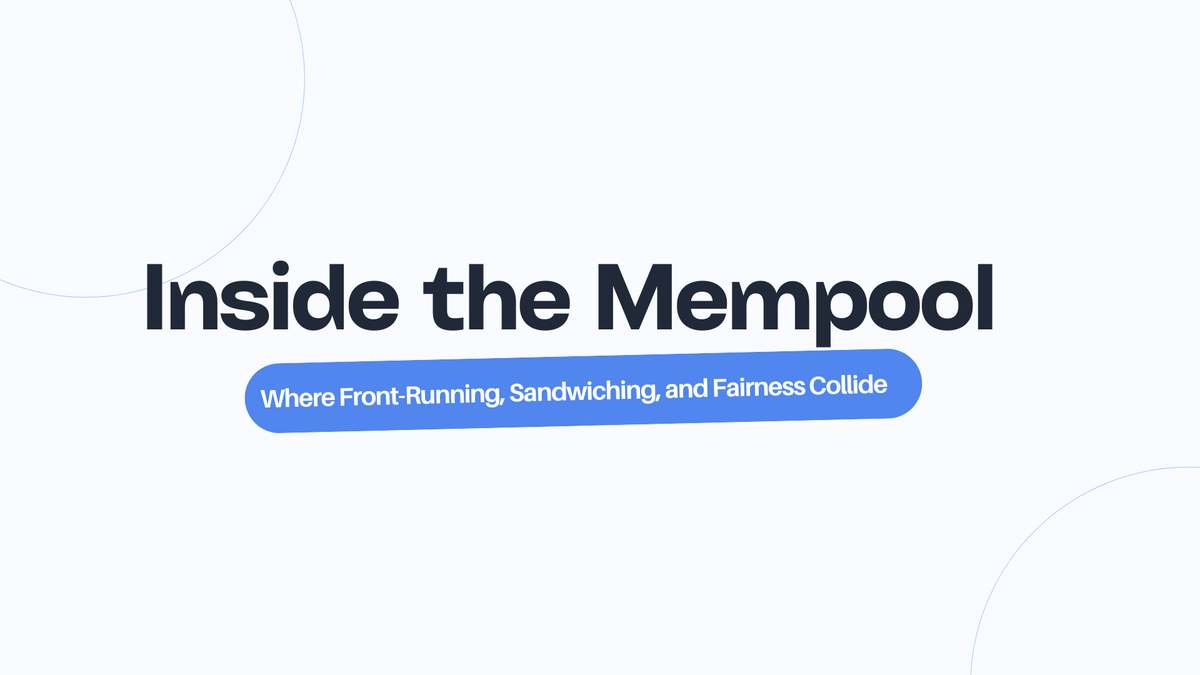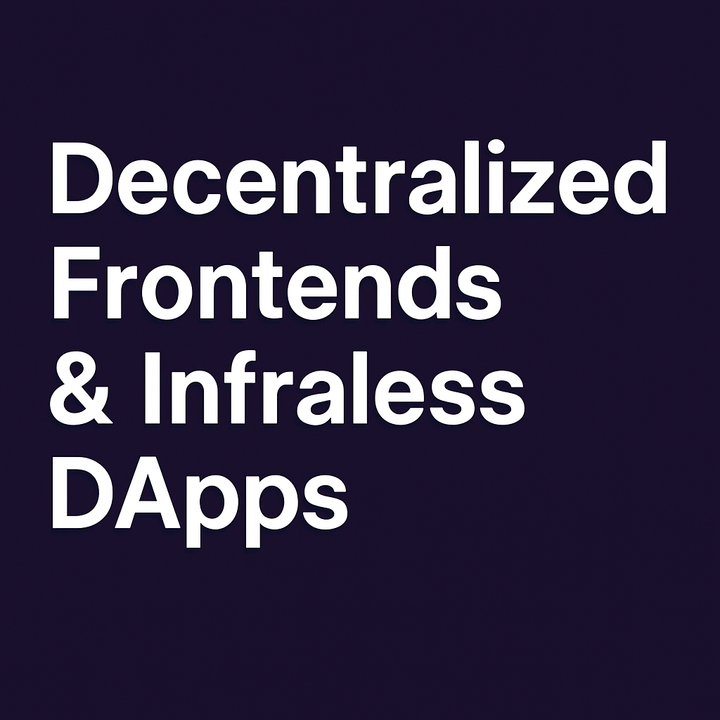Inside the Mempool: Where Front-Running, Sandwiching, and Fairness Collide

Introduction
Every blockchain transaction, before being added to the chain, takes a brief stop in a holding area known as the mempool. The mempool is where unconfirmed transactions wait their turn to be included in a block. While this process is essential for how blockchains function, it also opens up a lesser-known battlefield where traders, bots, and validators race to extract value. For blockchain beginners and traders, understanding this mempool battleground is key to navigating the world of decentralized finance (DeFi).
What Is the Mempool?
The mempool (short for "memory pool") is a temporary data structure used by nodes to store valid but unconfirmed transactions. When you send a transaction, it goes to the mempool where it waits until a validator or miner includes it in a block. Since most blockchains operate transparently, these pending transactions are publicly visible.
- Ethereum and BNB Chain both use public mempools, making pending transactions accessible to anyone running a node or connected to a mempool explorer.
- Solana, by contrast, uses a system called Gulf Stream, which forwards transactions directly to validators, reducing the mempool’s visibility.
Front-Running: Beating You to Your Own Trade
Front-running in crypto happens when someone spots your pending transaction in the mempool and sends their own with a higher fee to be included before yours. For example, if you're about to buy a token and someone else buys it just before you do (causing the price to go up), you end up buying at a worse rate. That person can then sell immediately after your transaction for a quick profit.
In traditional finance, front-running is illegal because it exploits privileged information. On blockchains, where mempools are public, the information is available to everyone.
Sandwich Attacks: A Squeeze Play
A sandwich attack involves two trades from the attacker:
- Front-run the user’s transaction by buying before them.
- Let the user’s transaction move the price.
- Back-run by selling after the user's trade completes.
This technique traps the user in a “price sandwich.” The attacker profits from the price difference created by the victim’s own transaction.
Example: Alice tries to buy a large amount of Token X. A bot sees her transaction in the mempool, buys Token X first, waits for Alice’s purchase to drive up the price, and then sells it at a higher price.
Why This Matters for Traders
For everyday traders, this means:
- Poor execution of prices
- Higher slippage
- Unexpected losses
A 2023 report showed that MEV bots extracted millions in value using sandwich attacks. For instance, during a single month, over $24 million in value was siphoned from unsuspecting DeFi users on Ethereum alone.
These attacks reduce trust in decentralized exchanges and discourage new users who feel the game is rigged.
Furthermore, traders who are unaware of how to limit slippage or use protected transaction routes are especially vulnerable. High-frequency bot operators often collocate their infrastructure close to validators and miners, giving them an advantage that ordinary retail traders can’t match.
Blockchain Responses to Mempool Exploits
Different blockchains are tackling this challenge in different ways:
- Ethereum: Tools like Flashbots Protect let users submit transactions privately, shielding them from public mempool monitoring.
- Solana: Removed support for the Jito mempool in 2024 to limit sandwich attacks and favor fairness.
- BNB Chain: Proposed BEP-547, a threshold encryption solution to create encrypted mempools, hiding transaction content until blocks are confirmed.
- Gnosis Chain: Uses Shutter Network to implement encrypted transactions that only reveal their content after being committed in a block.
MEV and the Race to Extract Value
MEV (Maximal Extractable Value) is the profit a miner or validator can gain by reordering, including or excluding transactions within a block. MEV strategies include:
- Arbitrage
- Liquidations
- Sandwich attacks
Bots known as "MEV searchers" scan the mempool for profitable transactions, simulate outcomes, and submit carefully crafted transactions with high fees to win priority.
MEV is not always harmful. For example, arbitrage and liquidations can help maintain market equilibrium and reduce protocol risk. However, toxic MEV like sandwiching, directly extracts value from users, raising ethical and sustainability concerns.
Regulatory and Ethical Considerations
In regulated finance, front-running is a punishable offense. In DeFi, its legality is murkier. Since all data is public by design, regulators are still figuring out how to apply traditional rules. However, community consensus often views sandwich attacks as harmful and unfair.
There are ongoing debates about how regulators should view MEV. Some suggest that entities running MEV bots could eventually be categorized as financial service providers or broker-dealers. Others argue that enforcement is nearly impossible on decentralized platforms.
Efforts like Flashbots and encrypted mempools are part of the ethical push to reduce predatory behavior while preserving market efficiency.
Solutions to Restore Fairness
Private RPCs: Users can route transactions through private networks like Flashbots.
- Encrypted Mempools: Prevent bots from seeing transaction contents.
- Order Flow Auctions: Protocols like CoW Swap allow users to sell their order flow to professional solvers who fill trades with better terms.
- Proposer-Builder Separation (PBS): Separates the roles of who builds and proposes blocks to reduce centralized MEV power.
- Batch Auctions: Some exchanges process orders in timed batches to eliminate speed-based advantages.
Users can also protect themselves by setting tighter slippage tolerances, breaking large trades into smaller ones, or using wallets that integrate MEV protection.
Conclusion
Understanding how mempools work and how they can be exploited is crucial for anyone engaging with blockchain-based trading. While the public nature of mempools offers transparency, it also creates opportunities for unfair practices like front-running and sandwiching.
As the ecosystem matures, both technical and policy-based solutions are emerging to ensure DeFi remains open, efficient, and fair. Whether you're a beginner or an active trader, staying informed and using protective tools can help you trade smarter in this complex, evolving space.
Ultimately, the challenge is to find a balance between the open architecture of blockchains and the need to protect users from harmful exploitation. Innovations in cryptography, transaction routing, and consensus design offer hope that fairness can be embedded more deeply into the infrastructure of DeFi.
References
- https://docs.solana.com/cluster/overview
- https://academy.binance.com/en/articles/what-is-front-running
- https://trustwallet.com/blog/what-are-sandwich-attacks
- https://docs.flashbots.net/flashbots-protect/rpc/quick-start
- https://cow.fi/
MITOSIS official links:
GLOSSARY
Mitosis University
WEBSITE
X (Formerly Twitter)
DISCORD
DOCS


Comments ()